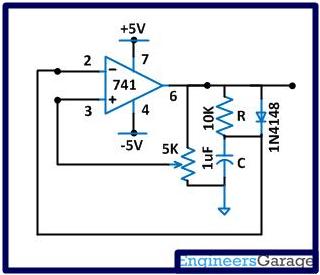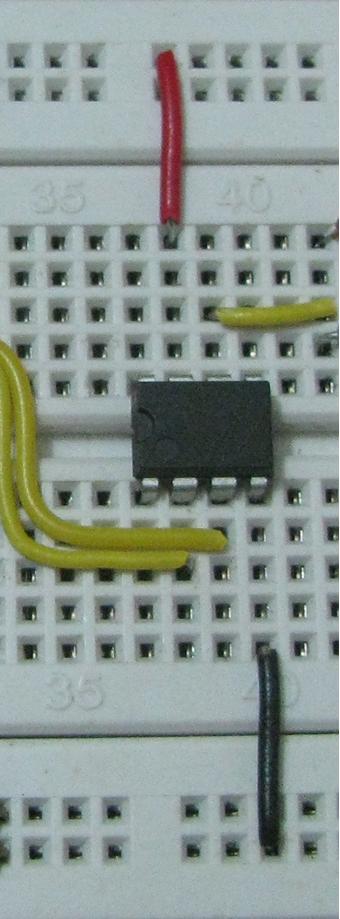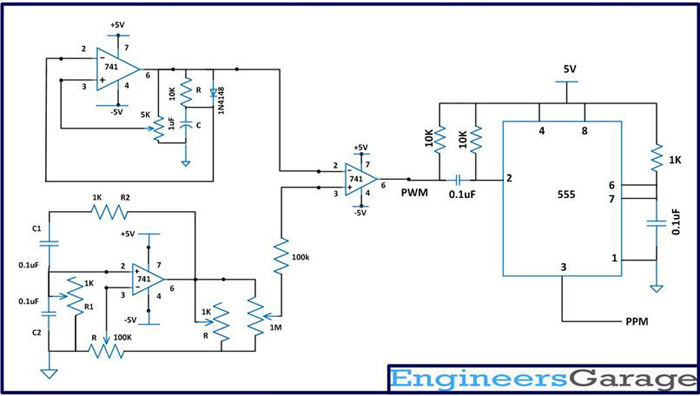In AM modulation technique, the amplitude of a carrier is varied according to the amplitude of the modulating signal. The advantage is the simplicity in the transmitter and receiver design but the noise performance is very poor. The FM modulation keeps the amplitude constant and varies the frequency according to the amplitude of the modulating signal. Since the amplitude is constant the noise performance is very high, but with a disadvantage of using large bandwidth for transmission. The PWM is a technique which can save the total transmitter power, but the power consumption varies momentarily. The Pulse Position Modulation (PPM) is a modulation technique designed to achieve the goals like simple transmitter and receiver circuitry, noise performance, constant bandwidth and the power efficiency and constant transmitter power.
In Pulse Position Modulation the amplitude of the pulse is kept constant as in the case of the FM and PWM to avoid noise interference. Unlike the PWM the pulse width is kept constant to achieve constant transmitter power. The modulation is done by varying the position of the pulse from the mean position according to the variations in the amplitude of the modulating signal. This article discusses the technique of generating a PPM wave corresponding to a modulating sine wave.
DESCRIPTION:
The Pulse Position Modulation (PPM) can be actually easily generated from a PWM waveform which has been modulated according to the input signal waveform. The technique is to generate a very small pulse of constant width at the end of the duty time of each and every PWM pulses. The PPM modulation of an input signal can be achieved using the following circuit blocks:


Fig. 1: Block Diagram of Pulse Position Modulation (PPM)
1) Variable frequency sine wave generator
A sine wave generator circuit is used in this project which is based on the Wien Bridge Oscillator (WBO) circuit. The Wien Bridge oscillator circuit can produce distortion less sinusoidal sweep at its output. The circuit is designed in such a way that both the amplitude and frequency of the oscillator can be adjusted using potentiometers.
The circuit diagram of the variable frequency sine wave oscillator is shown in the following:

Fig. 2: Circuit Diagram of Variable Frequency Sine Wave Oscillator

Fig. 3: Variable Frequency Sine Wave Generator Circuit on Breadboard
The frequency of the above circuit can be varied by simply varying the potentiometer R2 and the amplitude of the wave form can be adjusted by varying the potentiometer R. The snapshot of the waveform formed at the CRO screen using the WBO circuit is shown in the following image:

Fig. 4: Waveform Generated on CRO using Wien Bridge Oscillator (WBO )circuit
2) Ramp generator
The Ramp generator used in this circuit is designed with an op-amp and an RC charging circuit. The RC charging circuit is connected to the output of the op-amp and the voltage across the capacitor is connected to one of the input of the op-amp. To another input of the op-amp the variable pin of a potential divider is connected to which divides the voltage from the output of the op-amp.

Fig. 5: Circuit Diagram of Ramp Generator
The image of the circuit wired in the bread board is shown in the following figure:

Fig. 6: Ramp generator Circuit on Breadboard
The frequency of the ramp wave depends on the charging period of the RC circuit. The charging period depends on the RC constant which is the product of the values of the Resistance and the Capacitance.
The image captured from the CRO screen displaying a ramp waveform is shown below:

Fig. 7: Ramp Circuit Waveform Generated on CRO
3) Comparator
The ramp waveform is applied to one of the input of another comparator circuit and the output of the comparator circuit will be a PWM waveform. The comparator circuit is shown in the following figure;

Fig. 8: Circuit Diagram of Comparator
The image of the circuit wired on the breadboard is shown below:

Fig. 9: Comparator Circuit on Breadboard
The following is the image captured from the CRO screen displaying the PWM waveform:

Fig. 10: PWM Waveform Generated on CRO
The circuit diagram is given below:

Fig. 11: Circuit Diagram for Pulse Position Modulation
The 1M ohm resistor is used to adjust the amplitude of the sine wave signal generated by the WBO. The amplitude of the sine wave should be adjusted in such a way that it matches with the amplitude of the ramp signal generated.
Monostable Multivibrator and PPM Circuit
The image of PWM circuit wired in the breadboard is given below:

Fig. 12: Pulse Position Modulation (PWM )Circuit on BreadBoard
4) Mono-stable multi-vibrator
The mono-stable multi-vibrator here is designed using a 555 timer IC. The advantage of using a 555 timer IC is that it reduces the circuit complexity and requires only a few components and single power supply. The mono-stable time period depends on an RC charger here also which charges from 0V to 5V. The threshold pin (pin number 6) and the discharge pin (pin number 7) of the 555 are shorted together. The shorted point is then connected across the charging capacitor, so that whenever the voltage across the capacitor just reaches the threshold voltage, the discharging of the capacitor occurs. The discharge pin remains low till the time the 555 is triggered again preventing the capacitor from charging again.
The circuit diagram of the 555 wired as a mono-stable is given below:

Fig. 13: Circuit Diagram of 555 wired as Mono-Stable
The PWM pulses acts as a triggering source for the mono-stable circuit. To enable triggering from the PWM pulses, a triggering circuit needs to be implemented with the mono-stable circuit. The triggering circuit can be easily made from a couple of resistors and a capacitor which helps in the negative edge triggering of the 555 mono-stable. The circuit is triggered to generate a very short pulse of constant time period each and every time a falling edge is received from the PWM generator circuit.
The image if the mono-stable circuit wired in the breadboard is shown in the following image;

Fig. 14: Mono-Stable Circuit on BreadBoard
The complete circuit diagram and the image of the PPM modulator circuit wired in a breadboard is shown in the following image:

Fig. 15: Circuit Diagram of Pulse Position Modulation (PPM )Modulator

Fig. 16: Pulse Position Modulator Circuit on BreadBoard
Filed Under: Circuit Design


Questions related to this article?
👉Ask and discuss on Electro-Tech-Online.com and EDAboard.com forums.
Tell Us What You Think!!
You must be logged in to post a comment.